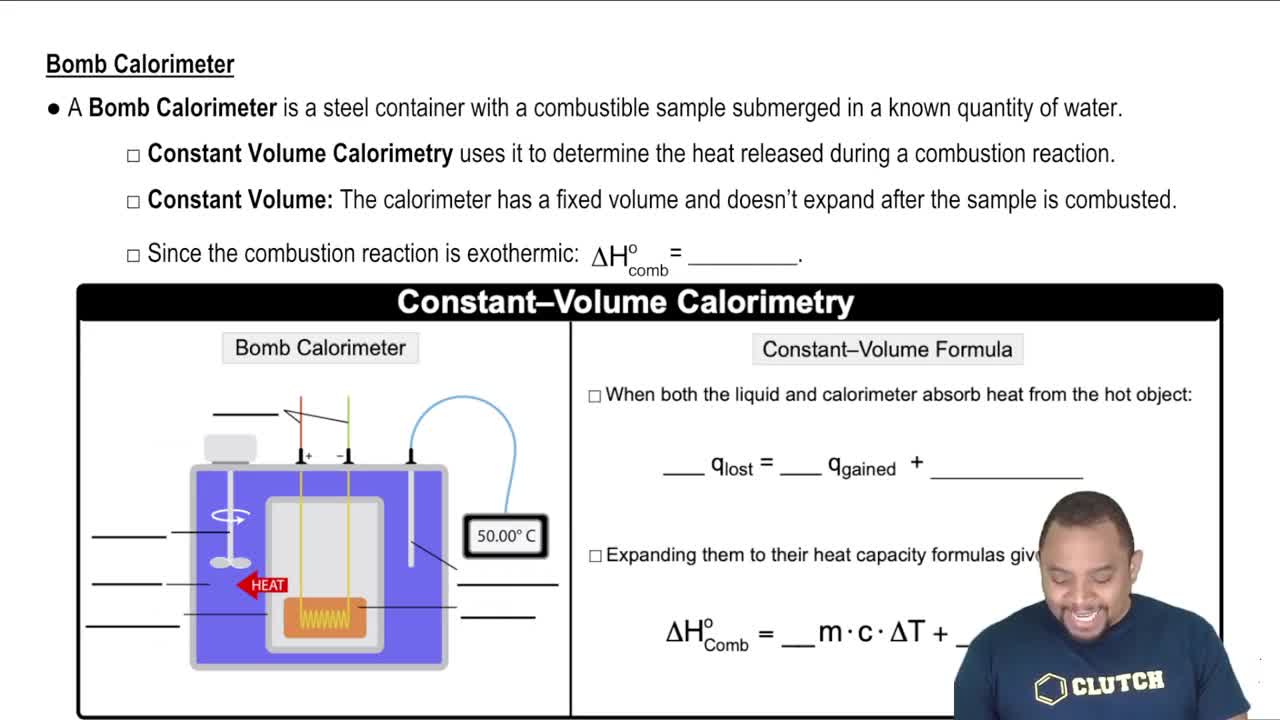A pure titanium cube has an edge length of 2.78 in. How many titanium atoms does it contain? Titanium has a density of 4.50 g/cm3.
Ch.2 - Atoms & Elements
Chapter 2, Problem 114
What is the radius (in cm) of a pure copper sphere that contains 1.14 * 10^24 copper atoms? [The volume of a sphere is (4/3)πr^3 and the density of copper is 8.96 g/cm^3.]
 Verified step by step guidance
Verified step by step guidance1
Calculate the molar mass of copper (Cu) using the periodic table, which is approximately 63.55 g/mol.
Determine the number of moles of copper atoms by dividing the given number of atoms (1.14 \times 10^{24}) by Avogadro's number (6.022 \times 10^{23} atoms/mol).
Calculate the mass of copper using the number of moles and the molar mass: \text{mass} = \text{moles} \times \text{molar mass}.
Use the density formula to find the volume of the copper sphere: \text{volume} = \frac{\text{mass}}{\text{density}}.
Solve for the radius of the sphere using the volume formula for a sphere: \text{volume} = \frac{4}{3}\pi r^3, and rearrange to find r.
Key Concepts
Here are the essential concepts you must grasp in order to answer the question correctly.
Avogadro's Number
Avogadro's number, approximately 6.022 x 10^23, is the number of atoms, ions, or molecules in one mole of a substance. It is essential for converting between the number of atoms and the amount of substance in moles, allowing us to relate the number of copper atoms in the sphere to its mass.
Recommended video:
Guided course

Avogadro's Law
Density
Density is defined as mass per unit volume and is a critical property for understanding how much matter is contained in a given space. For copper, with a density of 8.96 g/cm^3, this concept allows us to calculate the mass of the copper sphere once we determine its volume, which is necessary for finding its radius.
Recommended video:
Guided course

Density Concepts
Volume of a Sphere
The volume of a sphere is calculated using the formula V = (4/3)πr^3, where r is the radius. This formula is crucial for determining the size of the copper sphere based on its mass and density, as it connects the physical dimensions of the sphere to the amount of material it contains.
Recommended video:
Guided course

Constant-Volume Calorimetry
Related Practice
Textbook Question
Textbook Question
A pure copper sphere has a radius of 0.935 in. How many copper atoms does it contain? [The volume of a sphere is (4/3)πr3 and the density of copper is 8.96 g/cm3.]
Textbook Question
What is the edge length (in cm) of a titanium cube that contains 2.55 * 1024 titanium atoms? The density of titanium is 4.50 g/cm3.
2
views
Textbook Question
Boron has only two naturally occurring isotopes. The mass of boron-10 is 10.01294 amu and the mass of boron-11 is 11.00931 amu. Calculate the relative abundances of the two isotopes.
5
views
Textbook Question
Lithium has only two naturally occurring isotopes. The mass of lithium-6 is 6.01512 amu and the mass of lithium-7 is 7.01601 amu. Calculate the relative abundances of the two isotopes.
4
views
